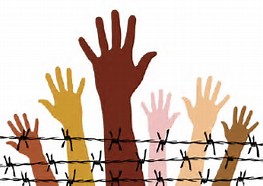Organizational Purpose: Work towards having the human rights of aging people recognized; in order for them to be released and returned to families to begin the process of reintegration and rebuilding communities and a more humane society.
Mission: To advocate, educate, and lobby for the release and human rights of aging people incarcerated in prisons across the United States.
Vision: Ultimately through Aging People in Prison Human Rights Campaign to help move the American criminal justice system and culture from a punishment to human rights paradigm for peoples accused of crimes.
Platforms
Reparatory Justice: In the UN Decade of Peoples of African Descent 2015-2024 and in conjunction with the Committee on the Elimination of All Forms of Racial Discrimination, United Nations Convention Against Torture, and Universal Human Rights Declaration; Aging People in Prison Human Rights Campaign seeks reparations in the form of “living bodies” that are returned to families after many decades of separation within a context of historical institutional racism and discrimination.
Generational Incarceration: As a result of systemic capitalism, racism and sexism a punitive culture has developed which captures and imprison women, men, and children. This incarceration of one family member now going into the 22nd century has evolved into generational incarceration of an entire family; leaving children to grow up their entire natural lives without parents. Thus in accordance with the UN Convention on the Rights of the Child, Committee on the Elimination of Discrimination against Women, Universal Declaration of Human Rights and Committee on the Elimination of All Forms of Racial Discrimination. Aging People in Prison Human Rights Campaign works to interrupt the cycle of generational incarceration through grassroots outreach and programs; these work towards creating a culture where families are considered the first institution to building a humane and whole society.
Alternatives and Diversions to Prison: As the United States continues to maintain the position of “incarceration nation” new paradigms, systems, and knowledge are required to begin to formulate new paths that do not lead one accused of a crime automatically to youth, adult, or elderly incarceration. Prison must be the last resort for punishment, rehabilitation, and healing for perpetrator and victim. Thus in accordance with the Universal Declaration of Human Rights, Committee on the Elimination of Discrimination against Women, and UN Convention on the Rights of the Child the US criminal justice system must incorporate new practices and policies based on human rights and impact a society that is learning to live together. Aging People in Prison Human Rights Campaign continues to research and collect comparative data on a local, regional, national, and international level that shows alternatives and diversions to prison that keep people whole and deal with them historically, contextually, and holistically.
Community/Civilian Parole Council: Community/Civilian Parole Council is a people-centered council located in a human rights framework whose members are people selected/elected for and from the local community. This is unlike the historical current governing parole board which evolves from the political spectrum of governors, politicians, etc.. Thus, the current US parole boards are very top down, unlike the community/civilian parole council which will be bottom up as this is where most of the people formerly and currently incarcerated emerge from; a geopolitical space comprising of income, class, ethnicity that contextually, historically, and culturally locates them within American society.
The Community/Civilian Parole Council approaches the process and prisoner from a paradigm of civil and human rights. The methodology is a mitigation oriented combined with a new legal awareness and analysis that places the council members and the prisoners in a space of rehabilitation, restorative justice, and human rights.
Restorative Justice: A human rights system that is a paradigm of human-centered laws, courts, and sentencing. Restorative Justice of composed of three spheres; community, offender, and victim. The variables which make up this paradigm are forgiveness, responsibility, reconciliation, healing, hope, closure, equality, inclusion, relationships, community, respect, amends, and humanity. Unlike the Criminal Justice System which approaches the offender as criminal first and punishment second it immediately separates him/her from family, community, and society. Restorative Justice approaches an offense as a crime against the community, two families in need of healing and reconciliation. After 400 years of a Criminal Justice System, 2 million incarcerated, thousands of prisons, 4 million children with 1 or more incarcerated parent/s, and generational incarceration it is time for a legal system which looks through a lens of humanness; Restorative Justice.
